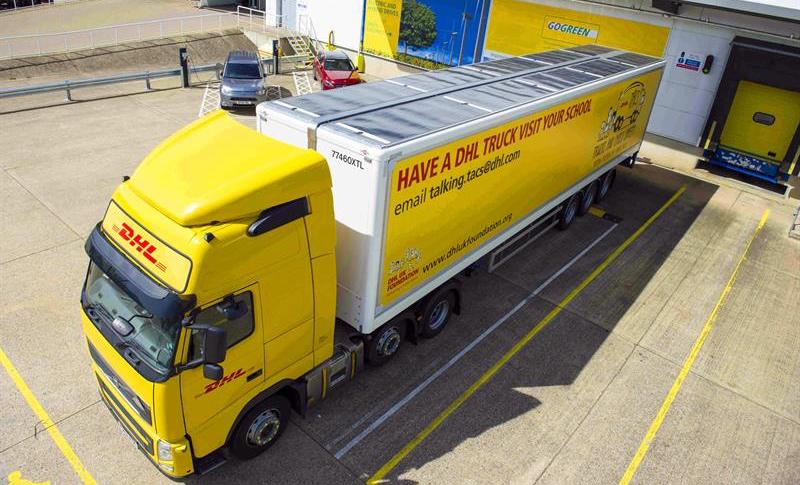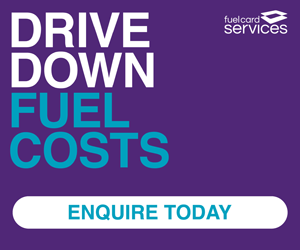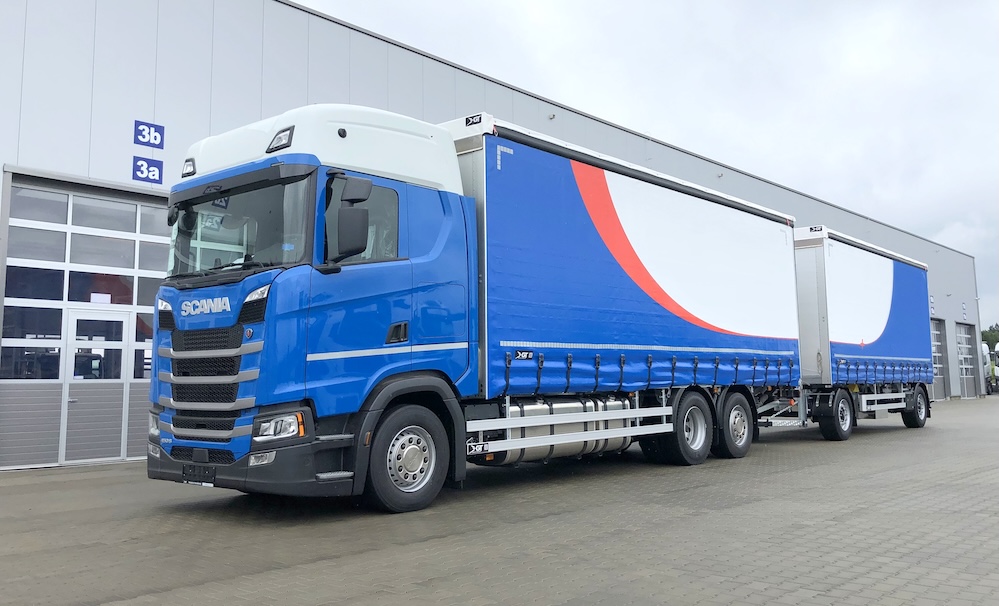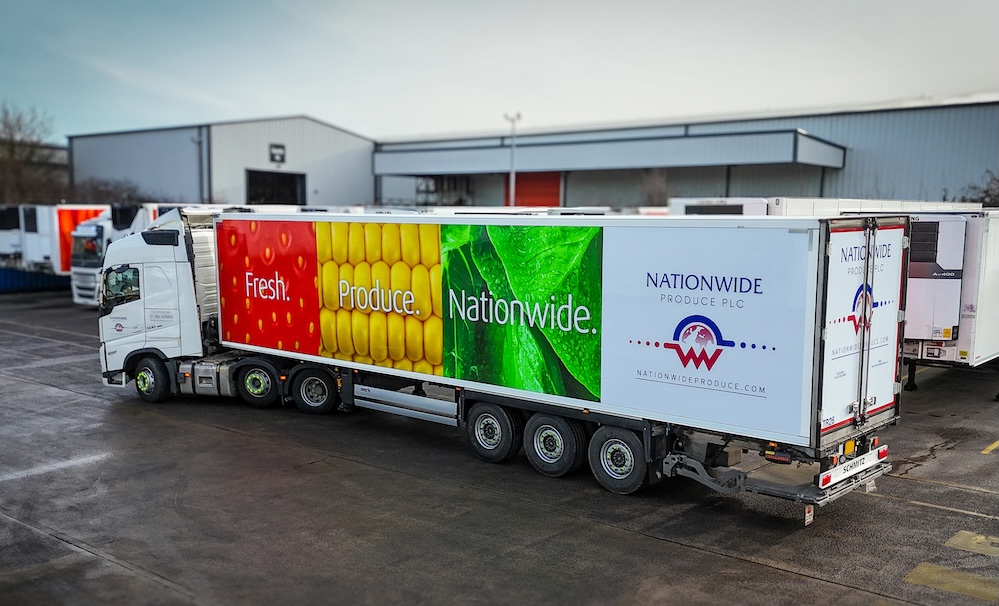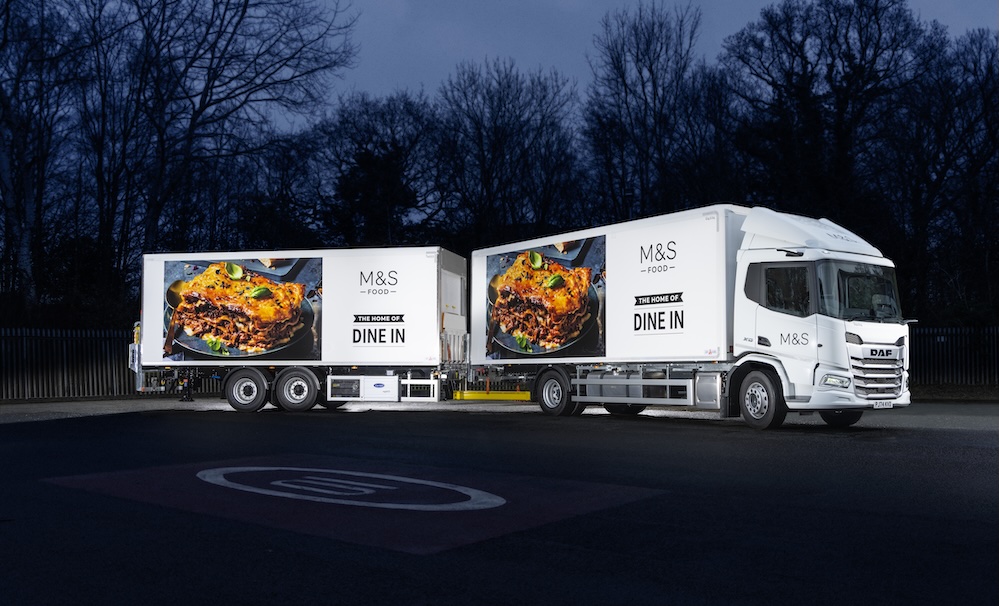Roof-mounted solar panels on trucks and trailers are fast becoming a credible investment for operators looking to eke out even more efficiencies from their assets. With reported fuel consumption savings of 5% and subsequent reductions in carbon dioxide through powering electrical devices on sunlight, companies with an eye on their bottom line as well as their emissions strategy have had their interest piqued.
Earlier this year DHL launched a trial system with bodybuilder Don-Bur that draws solar energy from trailer roofs to power almost anything that relies on electricity in the truck – air con, windows, radio, the tail-lift, even the engine.
Richard Owens, group marketing manager at Don-Bur, states that a truck’s biggest draw on electricity is turning over the engine. He adds: “Once the engine is ticking over, it requires a minimal amount of power. The initial hit uses up quite a large amount of energy. The solar panels alleviate the strain.”
Jessie Lund, study leader at the North American Council for Freight Efficiency (NACFE), says using solar energy to help extend the run-time of battery-operated heating, ventilation and air conditioning (HVAC) systems can improve driver comfort and satisfaction. It could also help extend the life of the battery and minimises the need for emergency roadside calls. Research by the NACFE found that battery life extension was one of the biggest economic benefits for solar use among North American fleet operators.
She adds that even just using solar to help support a truck’s ‘hotel loads’ helps keep the batteries topped up, extending their life.
That said, Lund does not believe solar panels are right for all truck fleets: “Firstly, our research focused on solar panels as applied to Class 8 [articulated tractor-trailer] fleets. Less is known about solar applications for light and medium-duty fleets.
“And even heavy-duty fleets should only consider solar panels if they are experiencing a challenge that solar can help alleviate: for example, battery HVAC systems not being able to run for a full rest period, [or] having to idle the truck in order for the liftgate [tail-lift] to function. In that case, they should size their solar system accordingly.
“Finally, fleets should also consider the location and timing of their operations. Depending on the use case, solar panels may make less sense for fleets with night-time operations or operations predominantly at far northerly latitudes, which directly ties to the angle of the sun and length of solar exposure as well.”
Also in North America, Shell has investigated the potential of solar energy for lorries. It collaborated with the USA’s Airflow Truck Company to design an energy-efficient truck that significantly reduced energy usage, called the Starship. Among the features on the ‘hyper-aerodynamic design’ were 15 5,000W solar panels fitted to the top of the vehicle, connected to, and charging, the main 48V battery pack on the tractor. This battery bank powers the cab’s air con, and inverter for the 120V hotel loads. Shell says that the solar-generated electricity, once down-converted to 12V by a cab-mounted DC-to-DC converter, powers standard truck components such as lights, wipers, blower motors and gauges.
Of that installation, Dan Arcy, Shell global OEM technical manager, says: “We have put technology in there that is available today. I believe there’s room to grow this more. Shell is definitely considering doing further studies with this. We see it as a rolling laboratory.”
PRODUCT ROLL-OUT
Back in the UK, so successful has the DHL trial proved that it is now creating a standalone business within the Deutsche Post DHL group – called Trailar – to roll out the solar-panel solution to more of its fleet, as well as offering it to third-party truck owners and fleet operators.
Aaron Thomas, Trailar co-founder, believes that fuel savings of 5.2% are possible, and that on a rigid vehicle, four tonnes of CO2 could be taken out of the atmosphere. He adds: “For what it does, it’s not an expensive piece of kit. The return on investment will be a year or two, depending on usage.”
Its rigid offering (pictured, above right), which is for sale now, consists of a controller and two 130W-capacity modules, each measuring 2,620mm by 310mm (equating to 160.5W/m2).
Attaching the system takes around six hours, but maintenance is described as “virtually zero”. Thomas says: “The main thing that has a detrimental effect is a covering of dust or dirt on the solar modules. Luckily, in the UK with all the rain, it’s self-cleaning!”
A fridge solution is also on the cards. Trailar is developing a reefer prototype, which will be tested to gauge how long the motor can work under solar power.
For the moment, Thomas says the solution should be of interest to rigid vehicle operators that are relying on what he calls “power hungry” tail-lifts: “Until we have done tests on vehicles with no tail-lifts, we can’t say what the fuel savings are like,” he adds. “You’ll still get a fuel saving, but it will not be as much.”
In other news, transport refrigerator manufacturer Thermo King – a brand of manufacturer Ingersoll Rand – recently announced an expansion of its Thermolite 12V solar panels portfolio with a 110W model for electric reefer models. At more than double the area (0.64m2 compared to 0.24m2) and weight (2.5kg compared to 1kg), it generates nearly three times the power of its previous 40W model. The firm claims that the panels eliminate the need to use the engine to charge the battery, reducing fuel consumption by up to 23% and CO2 emissions by 560kg.
Ingersoll Rand has also launched a 24V solar system for trucks. Two such units, similar in size to the 110W panel, are said to be able to power a tail-lift.
SKY’S THE LIMIT
Supplementing a truck’s battery life and cutting fuel consumption may not be the only uses for solar panels. Thomas says that Trailar is investigating the potential to turn lorries into mobile power stations that would pump the energy generated from roof-mounted panels back into the grid – an innovation he thinks could become a reality within five to 10 years. It’s also looking into how the technology can be harnessed to charge electric cars, using trailers as a storage unit for power, like vast batteries.
The upsides seem huge, but Lund at NACFE sounds a note of caution: “It should be noted that solar panels augment the electricity supplied by the truck’s alternator to its batteries, but they’re not designed to replace it. And as fleets begin considering electric powertrains, they should absolutely be aware that the solar panels currently on the market for the trucking industry, combined with the limited real estate on the truck’s roof, are nowhere near capable of powering an electric truck on their own.”



